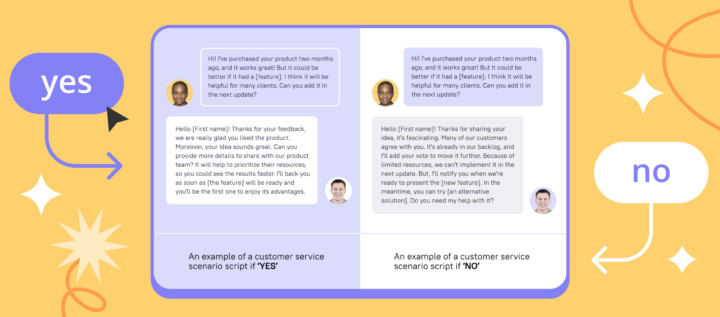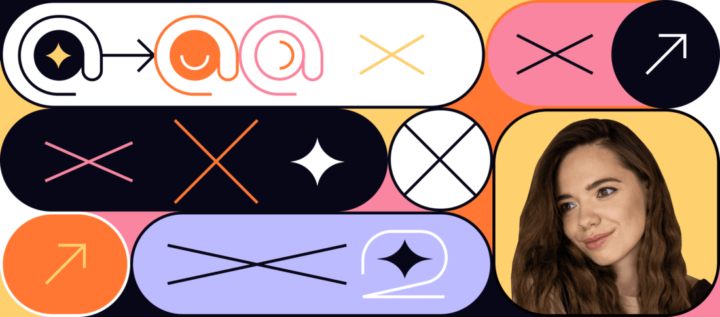How to create an online course that enhance your customer experience

Do you have invaluable knowledge you’d like to share with the world? The best option is to craft your own online course. In this article, we’ll break down the main steps to create an effective course that not only educates, but also adds value to your customer’s journey.
Buckle up!
Why build a course that elevates customer experience
Creating an online course is about more than just delivering information; it’s about designing an engaging learning experience that aligns with your brand. Done right, custom e-learning can create loyal, knowledgeable customers who see your brand as a trusted resource. For companies, corporate e-learning courses provide an efficient way to educate both employees and clients. Using online courses, you may introduce products and deliver ongoing support.
Step 1. How to understand your audience
The key question here is, “Who will benefit from this course?”
Start by analyzing your target audience, because they will be learning, right? Ask yourself: what are their goals, what are their pain points, what motivates them? Think about why they need this course and how it will benefit them. Are they new customers looking to get familiar with your product? Are they loyal clients eager for advanced knowledge? Or are they decision-makers evaluating your service?
Here are two quick tips that may help you:
- Survey your audience. Ask your customers directly about what they want to learn. Surveys and polls can reveal what matters most to them.
- Identify pain points. Focus on solving a key issue or fulfilling a need within your course. If your product is technical, for example, users might benefit from a step-by-step guide to get started.
The goal here is to build a profile of your learner that will inform every other aspect of your course.
Step 2. Set clear learning objectives
A great course starts with clear, actionable goals. Define what you want participants to achieve by the end of the course. For corporate e-learning, it’s helpful to break these objectives down by module or section, so participants have smaller milestones to reach throughout the program.
Examples of objectives:
- For new users, an objective might be “By the end of this course, you’ll understand the main features of our software and be able to set up your first project.”
- For advanced users, an objective might be “By the end of this module, you’ll know how to use advanced analytics tools to track progress and gain insights.”
Objectives are extremely important! They shape the course structure and help you focus on content.
Step 3. Choose the right platform for corporate E-Learning
The key question here is, “What features do I need?”
Finding the right learning management system (LMS) is essential. Look for platforms that offer features that are aligned with your goals. Interactive elements, multimedia options, mobile compatibility, and customization are often key in corporate e-learning.
Let’s look at a couple LMS features that may be important to consider:
- Customization. White label, course layout, and interface design to make it feel like an extension of your brand.
- Interactive elements. Look for quizzes, assignments, and gamification features to keep users engaged.
- Mobile accessibility. Ensure your course is accessible on mobile devices, so users can learn anytime, anywhere.
LMS platforms like Seturon can streamline the process by offering adaptive learning paths, mobile compatibility, and detailed analytics for tracking user engagement and course effectiveness.
Step 4. Outline your course structure
Organize your course into clear, digestible sections or modules. Start with a warm introduction, followed by progressive learning paths that build on each topic. A well-structured course makes learning more accessible and keeps learners motivated to complete each section.
Let’s check out a sample course structure.
- Introduction. This is where motivation starts to build! Set the expectations and tell your audience why they should spend time on this course.
- Module 1. Basic concepts. This is where you need to provide a solid foundation for the chosen topic.
- Module 2. Intermediate concepts. This module will build upon the basics giving additional information and context.
- Module 3. Advanced concepts. This is a dive into in-depth applications. Usually, this one is the most work-related module, as you’ve been building towards it in all the previous ones.
- Conclusion and next steps. Summarizing is great by itself, but it also may serve a motivation to continue learning even after the course is finished.
Tip. Use a mix of content formats.
Vary your materials with videos, infographics, and interactive quizzes to make the course engaging. A dynamic course structure improves knowledge retention and enhances the overall user experience.
5. Develop custom E-Learning content
Content is king, but it’s nothing without a cool delivery, right? Think about it like this: even the most awesome topic can be ruined by — let’s say — suboptimal delivery. Like this really boring school textbook. So, try to make your content pretty and easy to follow. Avoid information overload by focusing on clarity and conciseness.
Here are a few tips that will help you create engaging content:
- Use real-life scenarios. Practical examples help learners see the direct benefits of what they’re learning.
- Incorporate visuals. Use graphics, charts, and videos to illustrate key points.
- Let them play. Simply reading long texts will bore anyone! Quizzes and hands-on exercises encourage active participation and reinforce learning.
For corporate e-learning, customization is essential. Align your course materials with your brand tone, and make sure they relate to real-world applications within your industry.
Step 6. Focus on user experience (UX) design
Yes, UX rules definitely apply to online courses — they’re not only for mobile apps! If your course is poorly designed and hard to navigate, students will have to spend their resources learning how to do it instead of actually… learning. Consider the user’s journey through the course, and make sure it’s easy to navigate. Test the layout and design on multiple devices to ensure a consistent experience.
Step 7. Measure and improve
Once your course is live, tracking and analyzing user engagement is crucial. Use the analytics features in your LMS to monitor completion rates, time spent on modules, and quiz results.
Here are a few things that will help you evaluate your course:
- Ask their opinion. Surveys and polls at the end of each module can provide valuable insights.
- Analyze metrics. Pay attention to drop-off points and engagement levels to spot areas for improvement.
- Iterate as needed. Regularly update content to ensure it stays relevant and meets the evolving needs of your customers.
This is where a powerful LMS truly shines.
Step 8. Emphasize the role of E-Learning in customer experience
A well-designed online course doesn’t just educate — it transforms the customer experience by empowering learners and fostering brand loyalty. When customers feel that they’ve gained real value from your course, they’re more likely to see your brand as a trusted source of information and return for more.
Conclusion: Building a lasting customer experience with custom E-Learning
Creating an online course that enhances customer experience is a win-win for both you and your audience. Custom e-learning lets you tailor content to meet specific needs, while corporate e-learning offers scalable solutions that build skills efficiently. Through thoughtful design, interactive content, and continuous improvement, your course can become a powerful tool for building customer loyalty and satisfaction.
Remember, the best courses are those that adapt to user needs over time. So, keep iterating, gathering feedback, and refining your approach to ensure your e-learning platform remains a valuable resource for your customers.
More articles
- Comparative analysis of top 6 Chili Piper alternatives
- 7 best Patreon alternatives for creators 2025
- Top productivity hacks and tools for marketing teams
- Top Strategies for Effective Customer Engagement
- Valuable Hints to the Beneficial Customer Feedback Analysis
- Starting an Affiliate Marketing Store — Quick Guide
- Top 5 Best Zapier Alternatives in 2024
- Unlocking growth in app marketing: Monetization guide for app owners






![Growth Marketing, o que é? O guia definitivo [explicado por um hacker de crescimento]](https://www.dashly.io/blog/wp-content/uploads/2023/04/The-ultimate-guide-to-growth-marketing-explained-by-a-growth-hacker-720x317.png)

